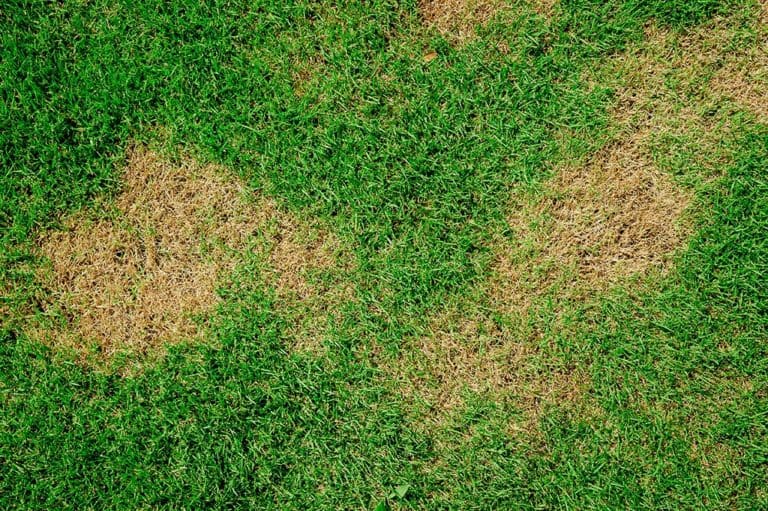Summer Diseases
As environmental conditions change during the spring and summer, lawns become more at risk to diseases. Rising temperatures and humidity in conjunction with prolonged moisture on the lawn produce optimal conditions for disease to thrive. Red Thread infects yards in the spring and into the early summer. Brown Patch is the most common disease during the summer. These two diseases can cause their worst symptoms during the summer, when cool season grasses (fescues, bluegrasses) are already weakened by the high temperatures.
Green Up uses an organic Summer Fertilizer which provides optimal levels of nitrogen, phosphorous, and potassium to the lawn during these taxing months. Our organic fertilizer has been shown to reduce the severity of both Red Thread and Brown Patch when compared with a nitrogen-only fertilizer. Furthermore, the addition of organic material has been shown to reduce diseases in turf grass and landscape plants. Deficiencies in nitrogen, phosphorous, and potassium reduce plant vigor and make them more susceptible to infection.
The products applied by Green Up will help your lawn survive the taxing summer months. As temperatures cool and humidity lessens, both Red Thread and Brown Patch will become less severe and eventually wane.
Red Thread
Diagnosis: Red Thread occurs mainly in the spring and early summer and affects all turf grasses. Perennial ryegrass, fescues, and bluegrasses are particularly vulnerable. It is characterized by irregularly shaped patches of blighted grass, ranging in size from a few inches to over three feet in diameter. Red Thread patches appear to be brown or tan, however close inspection reveals reddish or pink threads growing from the leaf tips.
Conditions Favoring Development: Day and nighttime air temperatures ranging from 68 to 75 degrees Fahrenheit coupled with prolonged periods of rainfall.
Control: Sunlight and air circulation are the biggest factors for combating Red Thread. If possible, trim landscaping to allow more light onto the lawn. Do not discontinue watering completely! This will cause the whole lawn to experience drought stress.
Brown Patch
Diagnosis: Brown Patch is actually a fungus. It occurs during the summer and affects all turf grasses. Tall fescues and perennial ryegrasses are are highly susceptible to infection. Brown patch primarily affects the leaves of the plant and rarely damages the roots. It is characterized by blighted patches ranging in diameter from a few inches to several feet. The grass has dull brown lesions, which may develop dark, reddish borders as the infection becomes more severe. Commonly, the grass looks “dried out” or wilted. Damage is most severe on lawns maintained at low mowing heights.
Conditions Favoring Development: High temperatures combined with water remaining on the surface for long periods over successive day. When night time temperatures remain above 68 degrees Fahrenheit and the leaves remain wet for 8 or more hours per day (including dew on the lawn overnight), infection rates are high. The disease is most active when day-time temperatures are above 80 degrees Fahrenheit. Rainy conditions and high humidity accelerate disease development and activity.
Control: Avoid irrigation in the late afternoon and evening. Early morning watering has been shown to reduce the effects of brown patch. Timing of irrigation has more impact than the frequency of irrigation. Continue to mow the yard on a regular basis and cut the grass higher than normal. As the disease affects the leaves and not the root structure, turf stands should completely recover when conditions become cooler and less humid.

Red Thread

Brown Patch

